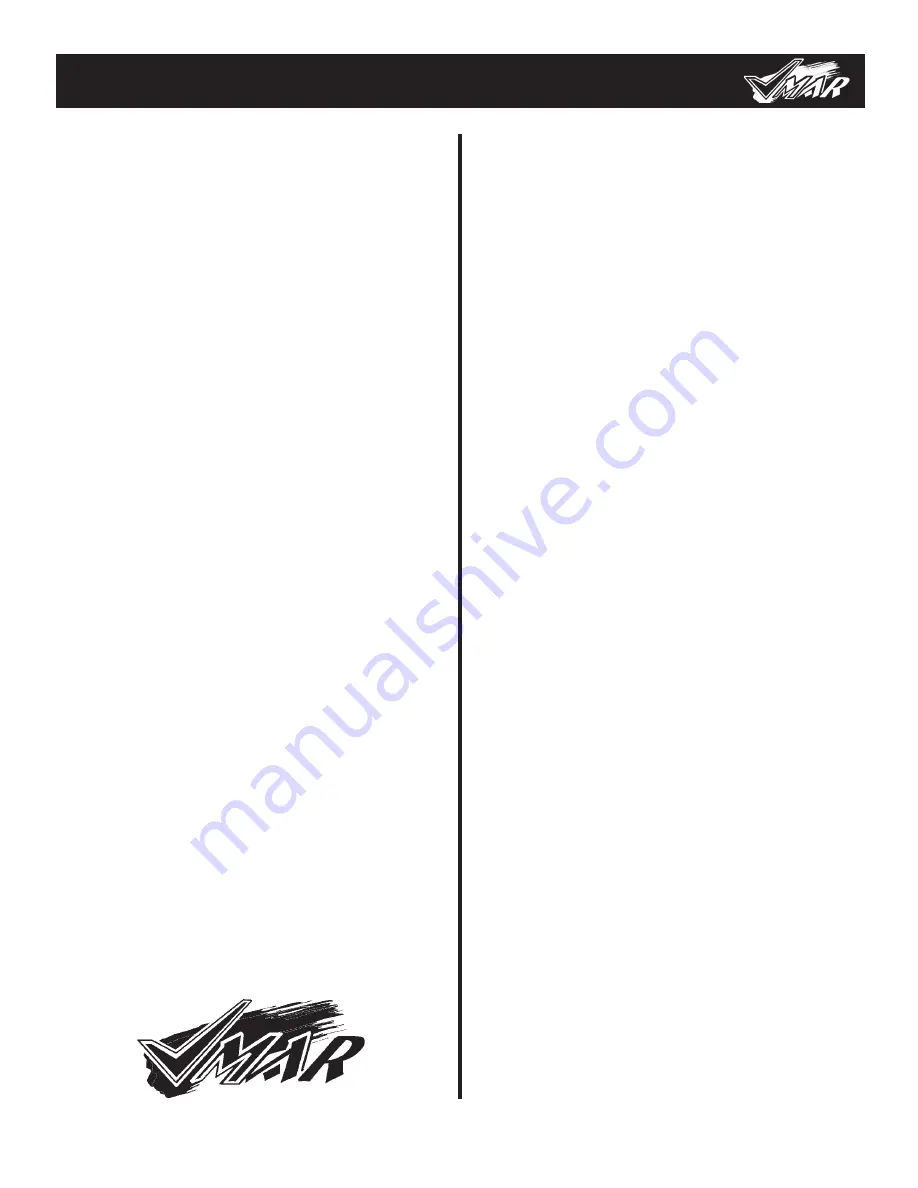
PAGE 6
TM
DEHAVILLAND BEAVER 120 ARF
R
R
R
R
R
PHASE 2 - WING ASSEMBLY
R
R
R
R
R
STEP 2.1 - TERMS TO REMEMBER.
We refer to:
- the outboard ends of the wings as the "wing tips",
- the flat wooden face that is at the opposite end from
the wing tip as the "wing root". We will be joining the
wing halves and the wing roots will end up contacting
each other.
- The back edge of the wing as the "trailing edge".
- The front rounded edge of the wing as the "leading
edge"
- the flat or flatter side of the wing as the "bottom" of the
wing.
- the curviest side of the wing as the "top" of the wing.
- the outboard moveable component along the trailing
edge of the wing as an "aileron".
- the inboard moveable component along the trailing
edge of the wing as a "flap".
- each of the slightly V shaped pieces of wood that will
serve to join the wing halves together as a "wing spar
joiner"
R
R
R
R
R
STEP 2.2 DRY ASSEMBLY OF THE
WING HALVES.
Carefully open the wing bag that is contained in the smaller
of the two boxes. Remove the staples from the end of the
bag and carefully remove the wing halves from the bag.
Carefully remove the spacers from the bottoms of both
wing halves. These spacers were put in place to separate
the wing halves during shipping.
Note that this wing is not intended to be glued and must be
used with the wing struts. It is to be assembled prior to
flying and then disassembled again for transport. However,
if you have a vehicle that accommodates a 10 foot wing,
you can glue the wing together using Pacer 30 Minute
Zpoxy but you must always use the wing struts when
flying.
The wing is joined and mounted using two wooden wing
spar joiners, two dowels protruding from the front recessed
area of the wing, two wing retaining bolts that go down into
the fuselage and two metal bolts with butterfly nuts that
serve to pull and retain the wing halves together.
From the wing parts bag locate the two wooden wing
dowels. They are approximately 1-1/2 in. long.
Mark the dowels at their mid length with a pencil. Insert the
dowels into the hole in the forward recessed face of each
wing up to the pencil line. This will ensure that the dowel
extends through the cavity. Glue the dowels into place with
Pacer 30 Minute Zpoxy.
Locate the wooden wing spar joiner that has a rounded half
notch at each end. This wing spar joiner measures approxi-
mately 3/4 x 7 in.. Insert one end of this wing spar joiner
into the forward spar cavity of the left wing ensuring that
you have the dihedral angle correct. Push the wing spar
joiner into the cavity until the rounded half notch engages
with the dowel inserted earlier. You want a snug fit. If too
tight, sand the wing spar joiner lightly only and trial fit it
again. Do not overdo the sanding… remember you want a
snug fit.
Locate the second larger wing spar joiner. This wing spar
joiner measures approximately 3/4 x 10-1/4 in.. Mark the
spar joiner at it’s mid point. Insert one end of this larger
wing spar joiner into the second spar cavity of the left wing
ensuring that you have the dihedral angle correct. Push the
larger wing spar joiner into the second spar cavity up to the
mid point mark. You want a snug fit. If too tight, sand the
wing spar joiner lightly only and trial fit it again. Do not
overdo the sanding… remember you want a snug fit.
TM
This space left intentionally blank






































